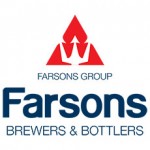The Dock No 1 project to convert the Knights’ and British-period buildings ton accommodate apartments, shops and restaurants, is a unique opportunity to rehabilitate the depressed inner harbour area through a development project that includes both social benefits for the residents as well as the restoration of historical buildings that are in an advanced state of deterioration.
FAA supports the sensitive way in which the proposed development builds on Malta’s heritage buildings rather than the ‘destroy and rebuild’ approach that takes place only too often. Certain areas have been opened to give the churches more surrounding open space, and structures such as the yacht club lowered so as not to obstruct vistas.
Sensitive Development
There are still a number of issues regarding this development that merit further discussion. We would argue that the open space beneath Senglea’s bastions, is crucial to Senglea’s citadel appearance and should not be built right up to the bastions. Heights in this area should stop short of obliterating the bastion line from certain angles.
We understand and support the desire for Malta to start encouraging the creation of high quality Landmark Buildings. However, we suggest that this site may not be optimal for such a building. Using the existing Senglea Gate as the landmark structure may be more appropriate than adding a competing seven storey structure.
Similarly, the five-storey Gateway Building flanking Gavino Gulia square is bound to give a sense of congestion, in spite of its ‘see-through’ ground floor. This building will block the most breathtaking long sea vista and it is felt that it will detract from, rather than enhance the project.
Recognising this as a 21 st century development, we envision a blend of modern and traditional architecture as providing the opportunity to highlight Malta’s heritage while creating a modern and vibrant development complex. The modern design concepts proposed for the yacht club and the marketplace could fit well with the old buildings across the water, where the utmost care is required to ensure that the additions and modifications are sensitive to their context, in line with the Vienna Memorandum, as well as using lightweight materials and reversible techniques.
Financing
We believe that financing issues should be concluded in a way that does not force the development to become undesirably dense and crowded as the only way to make the investment feasible. Aspects of the financing such as the community and social programmes associated with this development as well as the car parks that serve the resident population, can be appropriately shared between the developer and the State. This will reflect the fact that this project, if well executed, will have both commercial and social regeneration benefits in an area that has remained relatively depressed.
In conclusion FAA sees this project as one with many positive aspects which include the restoration of the historic buildings, programmes to improve the quality of life of the inner harbour residents, investment and employment opportunities as well as improved access to the waterfront to the local residents. Satisfactory resolution of the few remaining issues could make this development a model of high quality planning and co-operation between all stakeholders.



